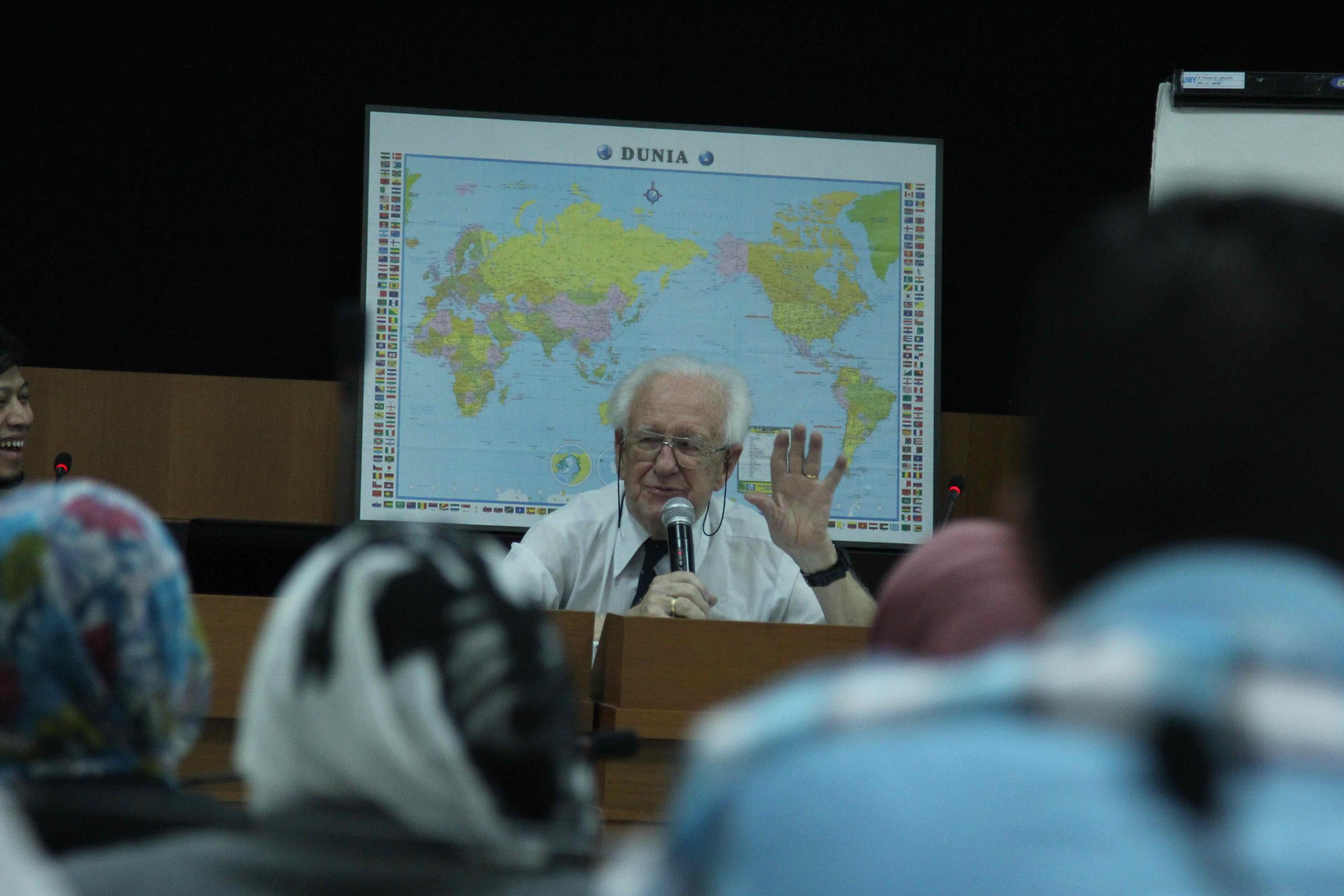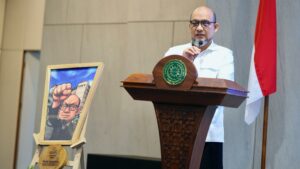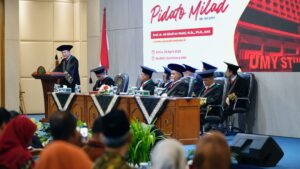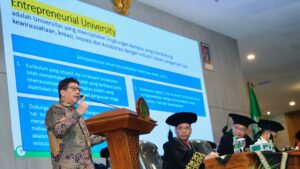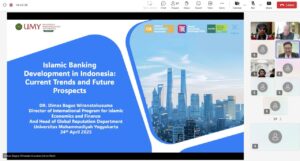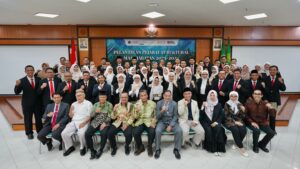
Conflict is often noticed only from the surface, for instance the number of victims and how some groups confront immediately. Meanwhile, one of the ways to solve the conflict is through finding out the trigger of the conflict. Thus, analyzing the conflict, it is necessary to have new mapping to recognize the ones getting involved and the background of the conflict. The appropriate mapping is through creating “triangular conflict and timeline” which is a technique to tell the development of the ongoing conflict.
The aforementioned statement was conveyed by “the Father of Peace Studies”, Prof. Dr. Johan Galtung, in delivering lecture at class session of Mahatir Global Peace School with the theme of “Border, Migration, and Global Peace” in Meeting Room of A.R. Fachruddin A. Universitas Muhammadiyah Yogyakarta on Friday (5/12). This third MGPS would be conducted up to Wednesday (10/12). In the session attended by forties participants from 44 countries, Galtung explained that “triangular conflict and timeline” could be employed to analyze conflict so that it would be able to be the fundamental of conflict fact disclosures which are Direct Violence, Cultural Violence, and Structural Violence. Through “triangular conflict and timeline”, it would be viewed that conflict is asymmetric, contradictive to the ones who involve in the conflict. It is caused by the business clash among the groups before the conflict takes place.
“I often describe triangular conflict as timeline which turns the basis of the way to disclose a conflict fact that could be portrayed by so-called direct violence, cultural violence, and structural violence. In fact, it is not symmetric, and there is determined contradiction from groups in the conflict. There is relationship between the groups in the conflict and the business clash among the ones in their relation before the conflict occurs,” stated by the sociologist, thinker, and peace activist who was born in Oslo, Norway.
Moreover, Galtung added that conflict frequently ensues among states or the internal of the state itself. However, conflict should be found the resolution. Conflict, he continued, could be overcome by the warring group, either directly or involving the third party certainly to mediate and find the resolution, for example by a state or organizations which have power in it.
“Every conflict should be found the resolution. Conflict could occasionally be resolved by the warring groups immediately. Nevertheless, it frequently engages the other to mediate and look for the resolution by either the state or organizations that is capable to it,” he uttered.
Galtung also added that there are three aspects which could resolve the conflict. The first is through the stopping process or reducing the violence by military intervention which could be engaged as a tool to coin neutral peace. It is so-called Peacekeeping, for instance when the United States of America (USA) and NATO did military intervention in ending conflict in Kasovo. Second, it is called peacemaking, drawing together and reconciling political attitude of the warring groups through mediation. Last, it is through implementing alteration or social, political, and economic reconstruction to coin long-lasting peace or well-known for peace building.
On the other hand, he also mentioned conflict in Afghanistan. Galtung said that the state needs peacemaking as one of the resolutions. However, he asserted that it is not an institution with military approach as NATO. It is the countries like Indonesia which has the greatest number of citizens and the other Islamic states would be able to take many roles to preserve peace in the country. “It requires peace keeping, but it is not NATO. It needs countries as Indonesia, Turkey, Malaysia, and other Muslim countries since they are considered as comrades.” (Shidqi)
